All issues

Predecessor
Volume 50, Issue 8
Displaying 1-6 of 6 articles from this issue
- |<
- <
- 1
- >
- >|
49th Annual Meeting of the Japanese Association of Rehabilitation Medicine Japanese Board-certificated Physiatrist Association
-
2013 Volume 50 Issue 8 Pages 635-648
Published: 2013
Released on J-STAGE: October 22, 2013
JOURNAL FREE ACCESS
Recent Prosthetic Therapy : From a Prosthesis Counseling Viewpoint …Osamu KASHIMOTO 635
Prescribing Prosthesis Following Major Amputation …Atsushi KINOSHITA 639
Considerations and Difficulties Encountered in Amputation and Prosthesis Prescription : Case Reports …Takamitsu KAWAZU, Toshihiro TOYONAGA 645View full abstractDownload PDF (3577K)
Original
-
Yoshimi ASAGAI2013 Volume 50 Issue 8 Pages 649-653
Published: 2013
Released on J-STAGE: October 22, 2013
JOURNAL FREE ACCESSAt the time that they left the rehabilitation facility, we conducted a survey of mothers who had accompanied their children during their stay in the rehabilitation facility. We conducted a five-tiered evaluation of the extent of their satisfaction and of their answers to various questions and studied the significance of mothers accompanying their children during their stay in the rehabilitation facility. There were 334 respondents, and the response rate was 74%. According to the results, 91% were satisfied or somewhat satisfied ; 94% thought, or thought to a certain extent, "I was able to concentrate on engaging with my child more than at home"; 94% thought, or thought to a certain extent, "I gained a good understanding of how to handle childrearing and training at home"; 87% thought, or thought to a certain extent, "There was a positive change in my child, and I saw improvement in the way my child functioned"; and 87% thought, or thought to a certain extent, "It was good to be able to exchange information with other mothers and the staff." The importance of the role played in rehabilitation when mothers and children attended the rehabilitation facility together thus became clear. When a child's motor functions improve through intensive training, and when the mother's motivation regarding rehabilitation increases and her ability to handle the child improves, it is highly significant in many ways : improvement can be seen not only in motor development but also in psychological development. The child becomes easier to handle, the things that can be done in daily life, at home, increase ; and after leaving the facility, it is possible to link the advances made in the rehabilitation facility to setting and attaining new goals.View full abstractDownload PDF (274K)
Short Note
-
Michiyuki KAWAKAMI, Meigen LIU, Atsuko HORIE, Masahiro TSUJIKAWA, Sayo ...2013 Volume 50 Issue 8 Pages 654-657
Published: 2013
Released on J-STAGE: October 22, 2013
JOURNAL FREE ACCESSPurpose : This study aims to measure the peak cough flow (PCF) in patients with subacute myelo-optic neuropathy (SMON) and study its relation with muscle strength, functional ability and vocal cord function. Methods : We performed a cross-sectional study in 7 patients with SMON (2 men and 5 women, mean age (SD) 81.6 (7.2) years) and in 7 age- and gender-matched patients with orthopedic problems as a control group. Their PCF, ability to walk, the Barthel Index, grip strength and maximum phonation time were assessed. Results : Mean PCF was 218.6± 66.2 L/min (110-300) for the SMON group and 267.1±76.3 L/min (170-360) for the control group (ns). The PCF was correlated with the maximum phonation time (r = 0.91 ; p<0.01), but not with grip strength, the Barthel Index or the ability to walk scale. Conclusion : The PCF in patients with SMON tended to be lower compared to the control group. Therefore, evaluating PCF is suggested to be necessary to assess the risk of pneumonia.View full abstractDownload PDF (319K)
Review Article
-
Ryoji NAKANISHI, Hiroaki YAMANAGA, Shinichi NOJIRI, Toru IDETA2013 Volume 50 Issue 8 Pages 658-670
Published: 2013
Released on J-STAGE: October 22, 2013
JOURNAL FREE ACCESSHoehn and Yahr (H-Y) staging and the Unified Parkinson's Disease Rating Scale (UPDRS) are commonly used for clinical evaluation of Parkinson's disease (PD). Iodine-123 metaiodobenzylguanidine (MIBG) myocardial scintigraphy and single photon emission computed tomography (SPECT) are useful for the differential diagnosis of PD from other Parkinsonism. Additionally, gravicorders or gait analysis systems and upper limb voluntary movement analyzing systems may be helpful for the quantitative evaluation of parkinsonian symptoms. From the early stage of H-Y, PD patents should be informed and coached about rehabilitation programs by expert therapists. Educational and health promotional gymnastics are the main programs used in stage I and II. Muscle stretching exercises, postural exercises, balance training and activity/instrumental-activity training are needed in stage III and IV. Finally, preventing changes due to disuse and lightening the caregiver load are the main purpose of rehabilitation in stage V. It is very important to understand not only the patients' clinical stages but also their personal situations such as their life-stage and life-style and their family situation. Home visit rehabilitation is useful to discover the actual daily living problems faced by patients and their families. Then, evaluation according to the International Classification of Functioning, Disability and Health (ICF) is available to clarify and solve the problems. With the progression of the clinical stage, patients need many social resources. Therefore, medical social workers (MSW) should be a part of the rehabilitation team to support the home care of patients from their incipient stage.View full abstractDownload PDF (1806K)
Regional Meeting
-
2013 Volume 50 Issue 8 Pages 671-675
Published: 2013
Released on J-STAGE: October 22, 2013
JOURNAL FREE ACCESSDownload PDF (401K)
-
2013 Volume 50 Issue 8 Pages 676
Published: 2013
Released on J-STAGE: October 22, 2013
JOURNAL RESTRICTED ACCESSDownload PDF (114K)
- |<
- <
- 1
- >
- >|